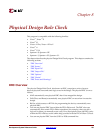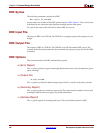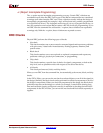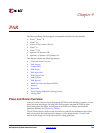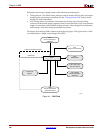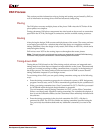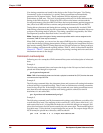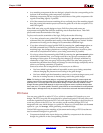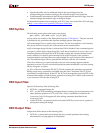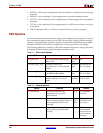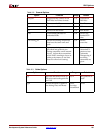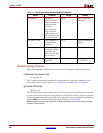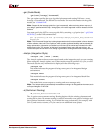
162 www.xilinx.com Development System Reference Guide
Chapter 9: PAR
R
If no timing constraints are found for the design or the Project Navigator "Use Timing
Constraints" option is unchecked (-x option), timing constraints are automatically
generated for all internal clocks. These constraints will be adjusted to get better
performance as PAR runs. The level of performance achieved is in direct relation to the
setting of the PAR effort level. Effort level STD will have the fastest run time and the
lowest performance, effort level HIGH will have the best performance and the longest run
time, effort level MED will have run time and performance between STD and HIGH.
Timing-driven placement and timing-driven routing are automatically invoked if PAR
finds timing constraints in the physical constraints file. The physical constraints file serves
as input to the timing analysis software. The timing constraints supported by the Xilinx
Development System are described in the Constraints Guide.
Note:
Depending upon the types of timing constraints specified and the values assigned to the
constraints, PAR run time may be increased.
When PAR is complete, you can review the output PAR Report for a timing summary or
verify that the design’s timing characteristics (relative to the physical constraints file) have
been met by running TRACE (Timing Reporter and Circuit Evaluator) or Timing Analyzer,
Xilinx’s timing verification and reporting utilities. TRACE, which is described in detail in
Chapter 12, “TRACE”, issues a report showing any timing warnings and errors and other
information relevant to the design.
Command Line Examples
Following are a few examples of PAR command line syntax and a description of what each
does.
Example 1:
The following command places and routes the design in the file input.ncd and writes the
placed and routed design to output.ncd.
par input.ncd output.ncd
Note:
PAR will automatically detect and include a physical constraints file (PCF) that has the same
root name as the input NCD file.
Example 2:
The following command skips the placement phase and preserves all routing information
without locking it (re-entrant routing). Then it runs in conformance to timing constraints
found in the pref.pcf file. If the design is fully routed and your timing constraints are not
met, then the router attempts to reroute until timing goals are achieved or until it
determines it is not achievable.
par –k previous.ncd reentrant.ncd pref.pcf
Example 3:
The following command runs 20 placements and routings using different cost tables all at
overall effort level med. The mapping of the overall level (–ol) to placer effort level (–pl)
and router effort level (–rl) depends on the device to which the design was mapped, and
placer level and router level do not necessarily have the same value. The iterations begin at
cost table entry 5. Only the best 3 output design files are saved. The output design files (in
NCD format) are placed into a directory called results.dir.
par –n 20 –ol med –t 5 –s 3 input.ncd results.dir




